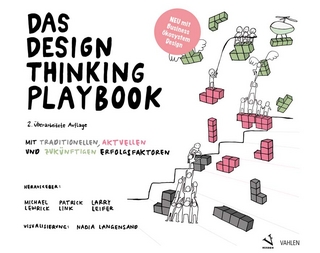
Human-Computer Interaction - INTERACT 2007
Springer Berlin (Verlag)
978-3-540-74794-9 (ISBN)
One: Keynote Speakers.- Human Values for Shaping the Made World.- Getting Your Message Across to Your Users.- Perspectives on Social Computing.- Two: Long and Short Papers.- Face-to-Face Sociability Signs Made Explicit in CMC.- Exploring Temporal Communication Through Social Networks.- Identifying Potential Social Impact of Collaborative Systems at Design Time.- Group Efficacy in Asynchronous vs. Multi-synchronous Virtual Teams: An Empirical Study.- Mutual Awareness in Collocated and Distant Collaborative Tasks Using Shared Interfaces.- A Proxy-Based Infrastructure for Web Application Sharing and Remote Collaboration on Web Pages.- Investigating User Attention and Interest in Websites.- FaericWorld: Browsing Multimedia Events Through Static Documents and Links.- Degree-of-Interest Visualization for Ontology Exploration.- S3: Storable, Shareable Search.- Trainable Sketch Recognizer for Graphical User Interface Design.- UI Prototyping for Multiple Devices Through Specifying Interaction Design.- Multi-fidelity Prototyping of User Interfaces.- User-Centered Design and Business Process Modeling: Cross Road in Rapid Prototyping Tools.- Ubiquitous Substitution.- Meta-design: Expanding Boundaries and Redistributing Control in Design.- Improving Users' Comprehension of Changes with Animation and Sound: An Empirical Assessment.- Designing a Free Style, Indirect, and Interactive Storytelling Application for People with Aphasia.- Supporting the Planning and Organization of Multiple Activities in the Workplace.- Creators, Composers and Consumers: Experiences of Designing a Digital Library.- A Common Sense-Based On-Line Assistant for Training Employees.- Proactive Assistive Technology: An Empirical Study.- Use and Implications of a Shared, Forecasting Calendar.- Utilizing SoundEffects in Mobile User Interface Design.- Multimodal PDA Interfaces to Assist Drivers in Monitoring Their Vehicles.- The Adaptive Hybrid Cursor: A Pressure-Based Target Selection Technique for Pen-Based User Interfaces.- ThumbSpace: Generalized One-Handed Input for Touchscreen-Based Mobile Devices.- Optimizing on Mobile Usage Cost for the Lower Income Group: Insights and Recommendations.- Button Keyboard: A Very Small Keyboard with Universal Usability for Wearable Computing.- Electronic Communication: Themes from a Case Study of the Deaf Community.- Accessibility and Interactive TV: Design Recommendations for the Brazilian Scenario.- Guidelines for Designing Mobility and Orientation Software for Blind Children.- SymAB: Symbol-Based Address Book for the Semi-literate Mobile User.- Accessibility of Assistive Software Installation Interfaces.- Model-Driven Adaptation for Plastic User Interfaces.- The Beautification Process in Model-Driven Engineering of User Interfaces.- Consistency Priorities for Multi-device Design.- A Flexible Presentation Tool for Diverse Multi-display Environments.- A Pressure-Sensing Mouse Button for Multilevel Click and Drag.- DeskJockey: Exploiting Passive Surfaces to Display Peripheral Information.- Drag-and-Guess: Drag-and-Drop with Prediction.- Wave Menus: Improving the Novice Mode of Hierarchical Marking Menus.- Nearly-Integral Manipulation of Rotary Widgets.- CATKey: Customizable and Adaptable Touchscreen Keyboard with Bubble Cursor-Like Visual Feedback.- A Conceptual Framework for the Design and Evaluation of Affective Usability in Educational Geosimulation Systems.- TEMo-Chine: Tangible Emotion Machine.- Characterizing the Diversity in Users' Perceptions.- Stay on the Ball! An Interaction Pattern Approach to the Engineering ofMotivation.- Motivational Needs-Driven Mobile Phone Design.- Mobile Application for Increasing Contextual and Emotional Work Group Awareness.- Employing Dynamic Transparency for 3D Occlusion Management: Design Issues and Evaluation.- Towards Applicable 3D User Interfaces for Everyday Working Environments.- Dwell-Based Pointing in Applications of Human Computer Interaction.- A Miniature, One-Handed 3D Motion Controller.- Use Case Evaluation (UCE): A Method for Early Usability Evaluation in Software Development.- Evaluating Reduced-Functionality Interfaces According to Feature Findability and Awareness.- Playful Probing: Making Probing More Fun.- Do I Do What I Say?: Observed Versus Stated Privacy Preferences.- In and Out of the Hospital: The Hidden Interface of High Fidelity Research Via RFID.- Exploring Multiple Usability Perspectives.
| Erscheint lt. Verlag | 22.8.2007 |
|---|---|
| Reihe/Serie | Information Systems and Applications, incl. Internet/Web, and HCI | Lecture Notes in Computer Science |
| Zusatzinfo | XXIV, 635 p. |
| Verlagsort | Berlin |
| Sprache | englisch |
| Maße | 155 x 235 mm |
| Gewicht | 989 g |
| Themenwelt | Mathematik / Informatik ► Informatik ► Betriebssysteme / Server |
| Informatik ► Software Entwicklung ► User Interfaces (HCI) | |
| Schlagworte | 3D user interface • Assistive Technology • Collaborative Systems • Computer-Supported Cooperative Work • Context Awareness • Education • Groupware • haptic computing • Hardcover, Softcover / Informatik, EDV/Betriebssysteme, Benutzeroberflächen • HCI • HC/Informatik, EDV/Betriebssysteme, Benutzeroberflächen • Human-Computer interaction • Human Computer Interaction • Human-Computer Interaction (HCI) • Human Factors • Information Retrieval • installatioin • Intelligent interfaces • Mobile Devices • Model-Driven Engineering • Multimedia Mining • multimodal interaction • Online Communities • privacy • semiotic engineering • Social Interaction • Social Networks • Universal Access • Usability • Use Cases • User-Centered Design • User Interface Design • User Interfaces • User Modeling • Virtual Reality • Visualization • wearable computing • Web |
| ISBN-10 | 3-540-74794-X / 354074794X |
| ISBN-13 | 978-3-540-74794-9 / 9783540747949 |
| Zustand | Neuware |
| Informationen gemäß Produktsicherheitsverordnung (GPSR) | |
| Haben Sie eine Frage zum Produkt? |
aus dem Bereich


